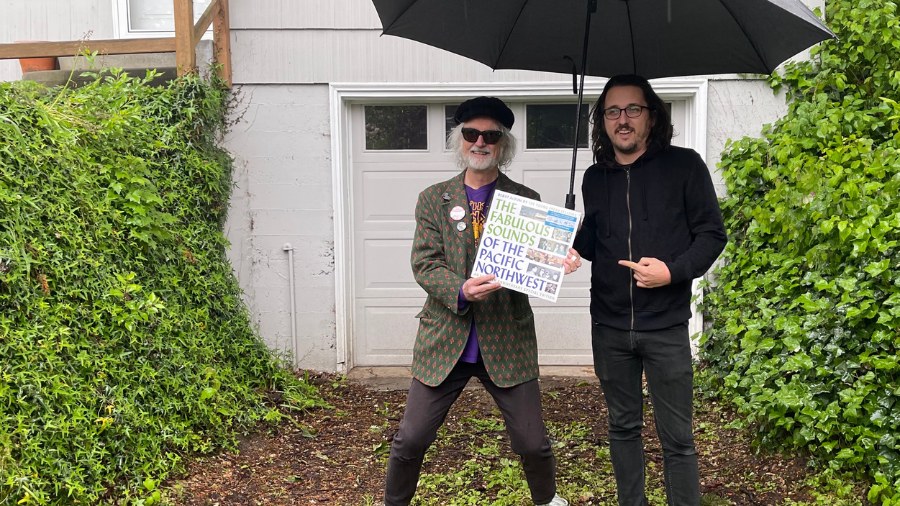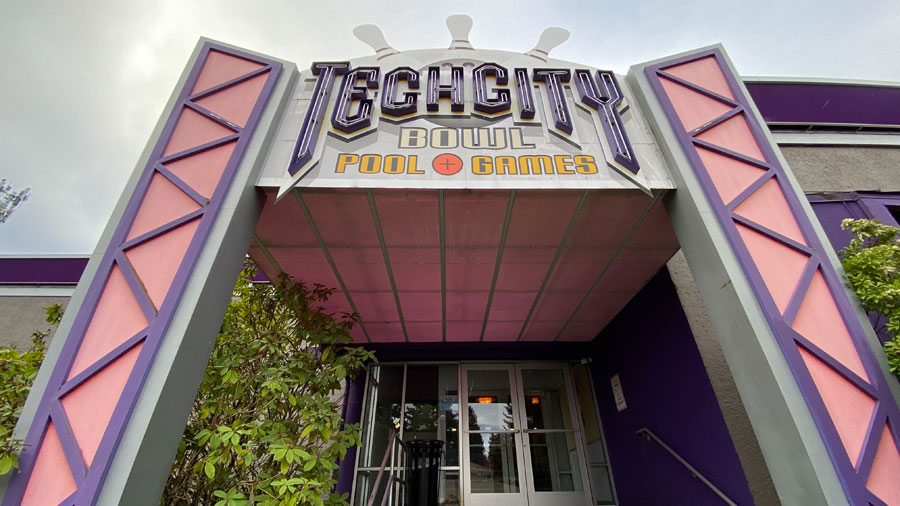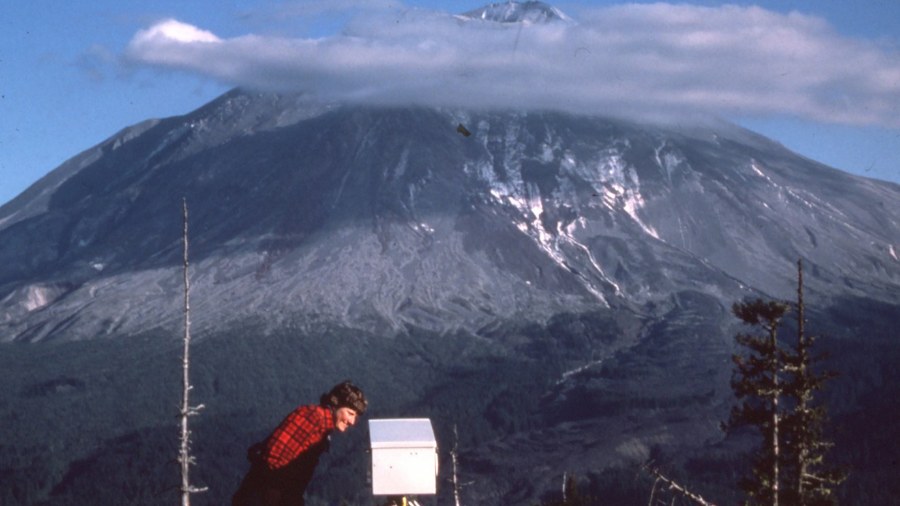KIRO Radio ready to serve in case of emergency
Nov 18, 2021, 5:45 AM | Updated: 2:43 pm

Soldiers at KIRO Radio during World War II.
In these times of political, social, and economic upheaval, we take for granted that the latest news is always just a click away on a smartphone. Through apps from traditional media outlets and status updates on social media, it’s pretty easy to keep up with current events, along with a fair amount of opinion and speculation.
But in times of real emergencies when lives are at stake, it’s also critical to get news and official information that cuts through the “likes” and “shares” and gets to people everywhere as quickly as possible, regardless of Wi-Fi or other internet connections.
That’s why KIRO Radio is proud to have partnered for years with FEMA, the Federal Emergency Management Agency, to provide unique communications facilities and capabilities in the event of a natural disaster or other emergency.
“With the help of our partners at FEMA, our stations are prepared to be on the air with lifesaving information,” said Cathy Cangiano, general manager of Bonneville Seattle. “And if the situation is dire enough, every radio station in the Puget Sound area will rebroadcast KIRO-AM’s signal.”
The AM transmitter’s location on an island in Puget Sound is only a minor barrier.
“The Coast Guard has standing orders to meet members of the KIRO staff at the Seattle waterfront and rush them to the Vashon transmitter site,” Cangiano said, “and our reporters and anchors are prepared to broadcast to the entire Pacific Northwest if such a crisis arises – KIRO people are among the best there are at gathering the news and getting accurate information on-air.”
The partnership between KIRO Radio and FEMA will be commemorated at a special event at the Vashon transmitter site on Friday, Nov. 19, 2021. Bonneville leadership and FEMA officials will be on hand to honor decades of working together, as well as to dedicate new and improved communications facilities at the transmitter site, which has served KIRO-AM listeners for more than 80 years.
At a similar event earlier this year near Boston, Antwane Johnson, director of the Integrated Public Alert and Warning System for FEMA, underlined the unique role that terrestrial radio plays in communities around the United States, and why stations like KIRO-AM have been chosen to serve as what are called “Primary Entry Points” for broadcasting during emergencies.
“We know that when there’s a catastrophic event, hurricane, tornado, flash flooding – you name the event – broadcast radio has been on the air,” Johnson said.
And, Johnson continued, while smartphones are useful most of the time, “I know in the case of an emergency, I’m going to radio to get the information I need from trusted sources who are on-air, providing critical information at the time that people really need that to happen.”
A partnership between a station like KIRO Radio and FEMA makes perfect sense to Jason Ornellas, Bonneville’s regional director of engineering for Sacramento, San Francisco, and Seattle.
“Being one of the 77 Primary Entry Points for FEMA shows the community that FEMA trusts KIRO to serve our community we care about by relaying emergency alert and warning information to the public before, during, and after incidents and disasters,” Ornellas said. “Bonneville takes serving their communities seriously, and this is a terrific partnership with FEMA.”
But even before FEMA existed, KIRO Radio was ready more than 80 years ago to serve Puget Sound residents who faced similar challenges to keep abreast of developments as World War II raged in Europe, and as war clouds gathered in the Pacific.
Newspapers that came out once a day were ill-equipped to keep up with fast-moving events overseas. Radio had been around for 20 years, but had been slow to embrace news, and was stymied by restrictions imposed by print media. Technology was improving, and political leaders, including FDR and Adolf Hitler, were using radio to give speeches and speak to citizens directly.
CBS founder William Paley is credited with first seeing radio’s potential to cover international news for an American audience. The improving technology and deteriorating political situation made the late 1930s ripe for radio to become a medium that listeners depended on from early in the morning to late at night.
KIRO Radio took a well-timed leap forward with its transmitter in early summer 1941, launching a powerful new transmitter on Vashon Island, and becoming the first radio station in the Pacific Northwest to be broadcasting with 50,000 watts of power.
On Sunday, June 29, 1941, at 11:30 a.m., KIRO Radio became the most powerful station north of San Francisco and Salt Lake City, and west of Denver. The new facility, technically on Maury Island, was a high-tech showplace, and gorgeous art deco palace of modern radio technology.
With the new transmitter and boosted signal, KIRO’s local news and other programs could now be heard far beyond Puget Sound, and well into British Columbia, Oregon, Northern California, and even Alaska. For many listeners in Alaska, KIRO would be the first station to provide regular radio service.
As an affiliate of CBS, KIRO beamed that network’s award-winning and iconic news and public affairs programs to tens of thousands of listeners all around the eastern edge of the Pacific Rim. Legendary broadcasters Edward R. Murrow, William L. Shirer, Eric Sevareid, Bob Trout, Howard K. Smith, and others delivered live reports from New York, London, Berlin and other cities, and KIRO brought those reports into living rooms in as many five states and most of a Canadian province.
And since many of those CBS live reports were timed for East Coast listeners, KIRO took the unusual step of making recordings of complete news programs and then broadcasting them later to better serve listeners in the Pacific time zone. KIRO saved all those recordings, and this “accidental preservation” is well-known in media history circles as one of the first and most valuable radio archives ever created.
KIRO’s big signal played a role in 1941 far beyond just reporting the news. When Japan attacked Pearl Harbor, KIRO spread the urgent word about the mandatory blackout that followed, and about how people could help respond to the needs of a region now in a war zone. The Army even posted guards at the KIRO transmitter.
The war also meant that the FCC froze all other pending power increases, leaving KIRO Radio in sole possession of the only 50,000 watt transmitter in the Northwest throughout the first half of the 1940s. As the war in Europe reached its most significant milestone, KIRO brought unprecedented live coverage of D-Day to the Pacific Northwest. And when victory was declared in Europe and then Japan, KIRO brought that coverage home, too.
It might be difficult in 2021 to fully appreciate what KIRO’s June 29, 1941, new transmitter and 50,000-watt power increase meant. It’s no secret that station owner Saul Haas was politically well-connected, and was something of a complex character. Getting permission from the FCC for the power boost was a coup, and the station’s big signal likely translated into big profits. Radio, after all, has almost always been a business.
But regardless of the commercial considerations, for those new listeners who heard the bad news and then the good news from battlefields overseas by way of the Vashon transmitter, and for whom KIRO was a consistent and reliable voice throughout a dark time in world history, radio was a lifeline.
Should disaster ever strike the Pacific Northwest, KIRO Radio and Bonneville Seattle is standing by to assist FEMA and to serve our community again in its time of need.
“We pray it never comes to that, but we’re ready, and we always have been,” Cangiano said. “It’s a responsibility we take seriously. We are committed to getting out urgent information when our region needs us. Our partnership with the federal government reaches back generations. And with Friday’s re-dedication, we stand ready for generations to come.”













